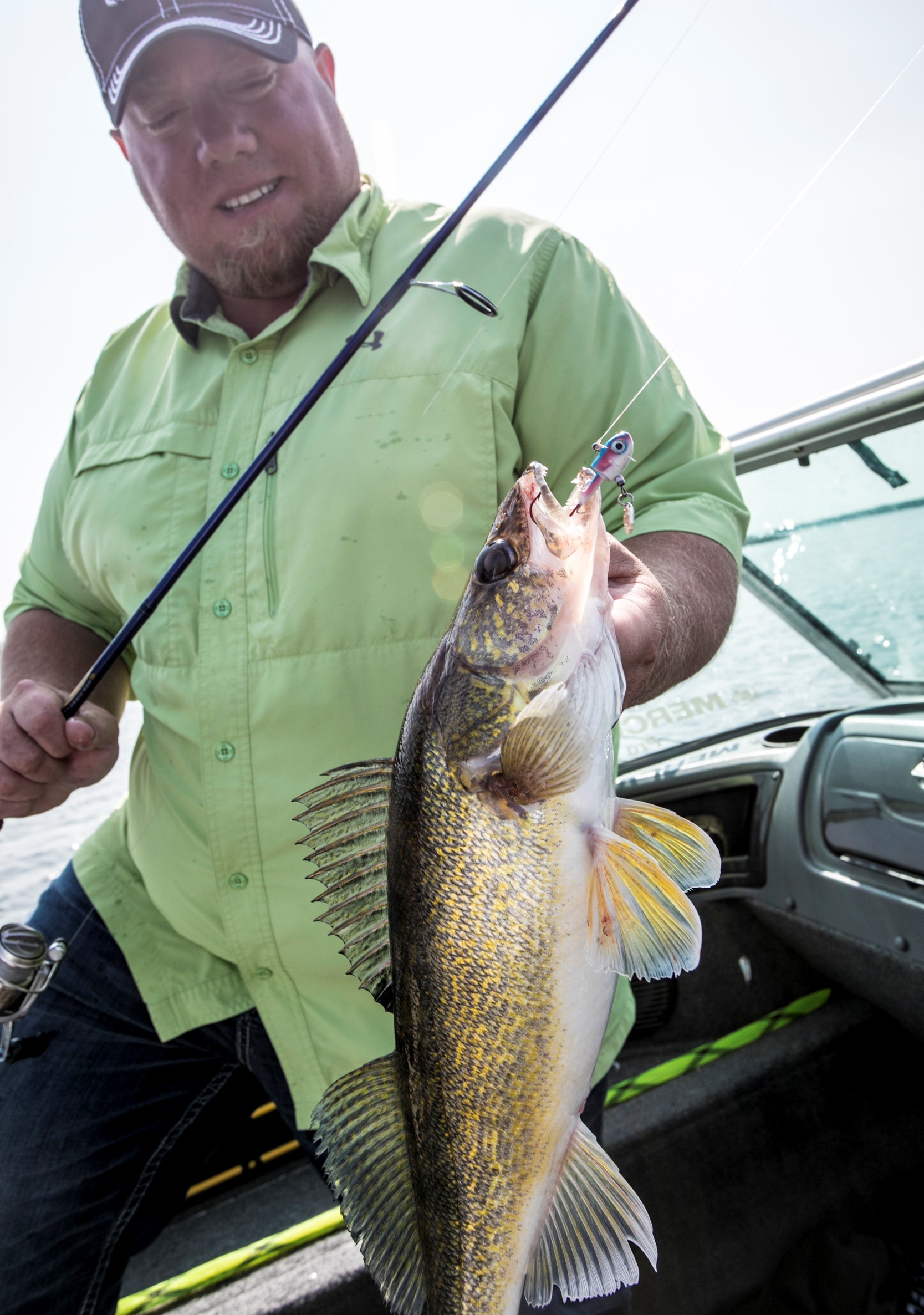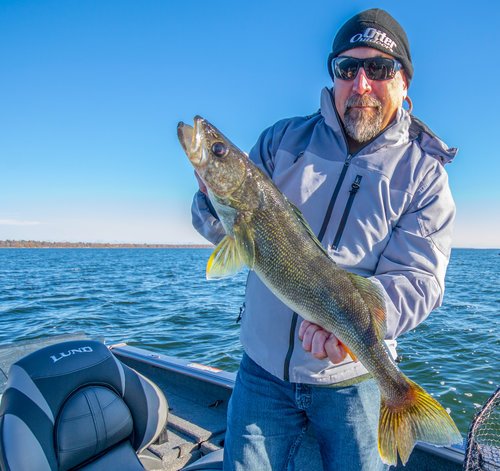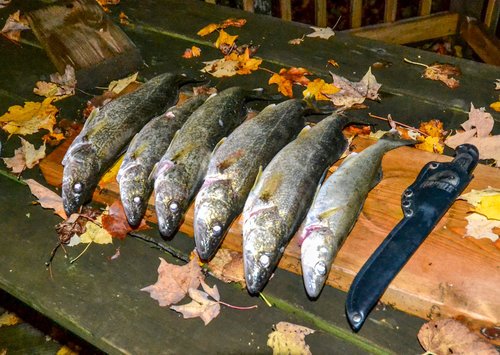We are programmed to understand that not all lure types are created equal, with different baits serving different needs seasonally for varying species. What about baits in the same class however? While we grasp the thought that a jerkbait is not the same as a spinnerbait, we tend not to distinguish characteristics in-class, with jigs being no exception. That said, there is a huge number of jig-styles, sizes, shapes, and colors, with all sorts of hardware and appendages molded-in or otherwise attached.
I have my favorites, but I thought I would call in the advice of successful Dakotas guide and Northland Tackle Pro-Team Coordinator Cody Roswick. Cody knows his way around both North and South Dakota, often using jigs to guide his clients to quality fish no matter where the bite takes him, or what technique the day calls for. Like with most guides and pro’s I have fished with, small details frequently reap huge dividends, so it pays to pair the right jig to the scenarios you fish. Here is a quick run-down of some popular styles, and how to go about choosing which variety to use, and when.
Jigs For Minnows – These two are an original pairing that have stood the test of time, and Cody fishes them primarily during the early season. With designs like the Fire-Ball that offer a secondary-eye to attach stinger hooks being extremely successful. Having the option to attach that extra treble for short-striking fish can really be handy, even if you start the day without. For larger minnows like shiners, consider this option or other jig types with a long shank that places the business end of the hook further back on the minnow.
Jigs For Crawlers/Leeches – For the most part, you have quite a few options here, especially with leeches as provided you hook them in the sucker or just underneath, you will not have to worry too much about the hook holding your bait. With crawlers however, you will want a keeper at the base of the jig ball itself to retain the bait and prevent it from sliding down the hook shank un-naturally.
Jigs For Plastics – As water temperatures warm, live-bait options for walleyes lose favor to plastic imitations, but you will want some different jig designs for fishing them. Cody says, “Wire barbs for keepers will prevent everything from bluegills to bass pulling at the tail end of the plastic all the way down to the hook bend.” Roswick continues, “Not only does this rip your plastics option of choice, it frequently causes the bait to run un-true.” Premium models that do the best job of avoiding this issue will have dual-barbs or wire-keepers that truly lock the plastic to the base of the jighead.
Stand Up Jigs – Use this type of jig style in river areas when trying to drag bottom, or lakes when again trying to trace as close to the substrate as possible. Often, bottom contact can be a crucial part of the presentation, and that is when stand-ups are worth their weight. “These jigs shine in helping fish suck that bait off of bottom, as the hook points up and back at a 45 degree angle in their face,” mentions Cody.
Jig/Spinner Combinations – This group encompasses a number of jigheads from thumper-style models with a swivel and blade beneath them, to a whistler-style jig with an in-line twin-rotating blade. Both perform similar tasks in creating flash and vibration to attract fish from distance. “This can be important in river systems or natural lakes with limited visibility,” says Cody. “I use them a lot with live-bait when fishing vertically, especially deep river systems.”
Current Cutter – Pill-Shaped Jigheads – Speaking of rivers, current-cutter style jigheads have made some strides in recent years, as the pill-shaped and more elongated design simply offers less drag in current. “That allows you to fish lighter, while still getting down to the fish,” says Roswick, a key component to many river situations where current can keep a jig higher in the water column than you want it.
Floating Jigs – Of course, one of the best ways to stay near bottom is to rely on another weighting system other than the jig to keep you pinned there. That makes floating jig head options a mainstay in many anglers’ boxes. Present livebait in any manner with confidence, knowing your bait will float just above the snags. Add some current to the mix, and many designs like the Gumdrop or Phelps-Floater will jog side to side like a crankbait for added action.
Hair Jigs - Whether animal hair like bucktail, marabou, or other synthetic materials, these skirted jigs are often tipped with bait and presented both vertically or casted. You will need different weights to satisfy the various depths, but hair is a great way to add bulk, color, and life to an otherwise plain offering. In lakes and rivers, hair jigs do not get as much press as they deserve.
Weedless Jigs – Designs like the Weed Weasel and others with plastic deflectors in front of the hook point are classic heavy cover options. Roswick who fishes the trees of North Dakota’s Devil’s Lake says, “They’re a mainstay for me anywhere near weeds or timber, and they have a heavy hook if you need to horse them out of nasty cover.” Tip them with your live bait of choice, and consider them anytime you are afraid to throw other jig styles into the thick stuff.
Photo Credit - Matt Addington Photography





